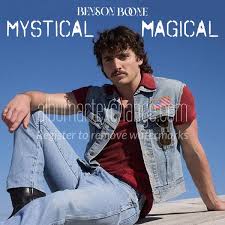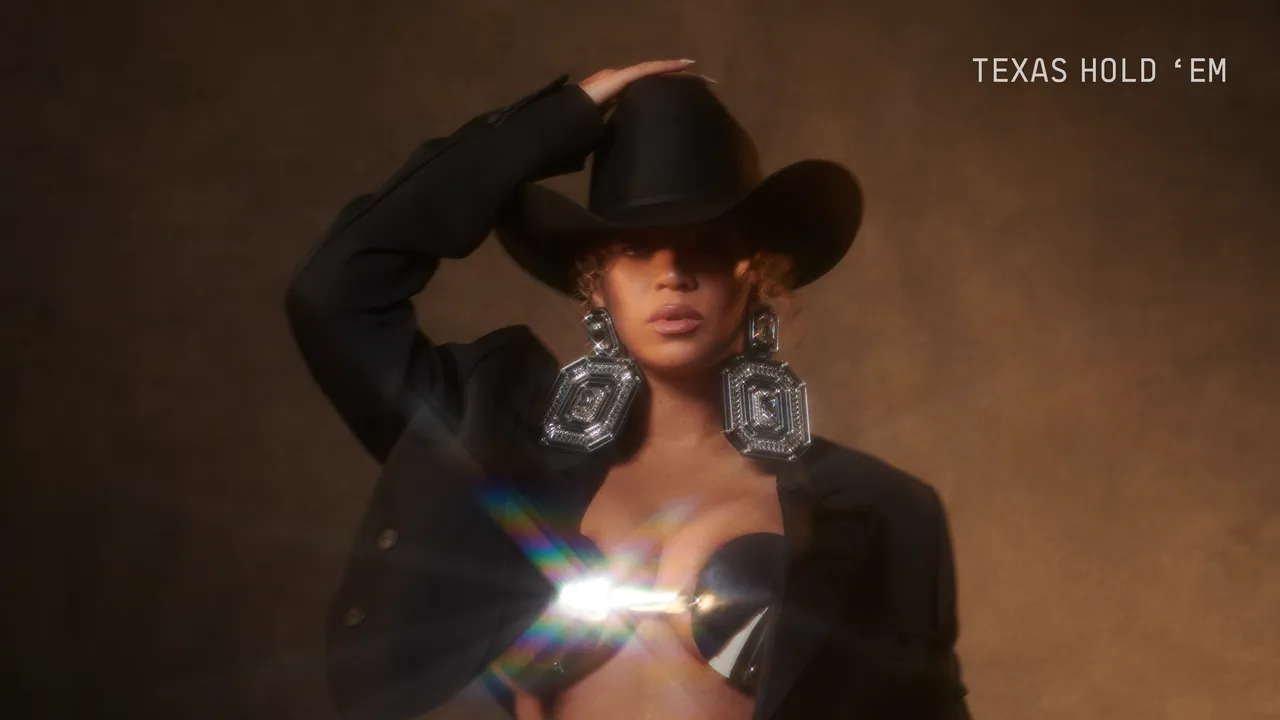 Pop music has always thrived on the tension between desire and restraint, impulse and reason. Dove Cameron’s “Bad Idea” dives headfirst into that friction, wrapping emotional chaos in glossy production, sultry vocals, and cinematic flair. Released in 2022 as part of her reinvention from Disney Channel ingénue to dark pop provocateur, the song stands as one of the defining moments of her career—a manifesto of controlled recklessness, where passion outweighs logic, and the thrill of surrender becomes the centerpiece of the experience.
Pop music has always thrived on the tension between desire and restraint, impulse and reason. Dove Cameron’s “Bad Idea” dives headfirst into that friction, wrapping emotional chaos in glossy production, sultry vocals, and cinematic flair. Released in 2022 as part of her reinvention from Disney Channel ingénue to dark pop provocateur, the song stands as one of the defining moments of her career—a manifesto of controlled recklessness, where passion outweighs logic, and the thrill of surrender becomes the centerpiece of the experience.
“Bad Idea” is more than a catchy breakup rebound anthem—it’s a portrait of obsession and self-awareness in the age of modern pop. Cameron doesn’t pretend to be the victim or the hero; instead, she leans into the mess, the craving, and the impulsive decision-making that defines the gray area between love and lust. It’s a sleek, intoxicating piece of pop craftsmanship that captures not only a personal narrative but also a generational mood: a celebration of flawed humanity in an era obsessed with image.
The Sound of Sweet Recklessness
“Bad Idea” opens with a confident pulse—cool synths, tight percussion, and Cameron’s voice dripping with a mix of seduction and defiance. The production, handled with cinematic precision, reflects her new sonic identity: sleek, moody, and unapologetically dark-pop. This isn’t the bubblegum brightness of Descendants or the sugar-sweet optimism of her early work. Instead, Cameron crafts an atmosphere closer to Billie Eilish’s minimal tension or Madonna’s Erotica-era allure—intimate, nocturnal, and hypnotic.
The song’s strength lies in its juxtaposition of clean production and emotional chaos. Each beat feels deliberate, every pause a calculated seduction. Yet the lyrics betray a vulnerable impulsivity—“I know it’s a bad idea / but how can I resist?”—that undercuts the song’s polished exterior. It’s this duality that makes “Bad Idea” so compelling: it’s both confession and performance, recklessness rendered in high definition.
Cameron’s vocal delivery is crucial to the track’s emotional texture. She doesn’t belt like a diva or whisper like an indie poet; she walks a razor-thin line between both, creating tension through restraint. Her voice lingers just long enough on the syllables to make you feel the weight of each word. There’s a simmering heat beneath her calm tone, the sense that she’s barely holding back a deeper, more dangerous emotion.
Reinvention and Liberation
To understand “Bad Idea,” one must also understand where Dove Cameron was before it. For years, she occupied the bright, wholesome world of Disney—a realm where image control was paramount and rebellion existed only in carefully curated doses. Songs like “If Only” or “Better in Stereo” showcased her talent, but they didn’t capture her essence. That changed in 2022, when Cameron began peeling back the layers of pop perfection to reveal something darker, more introspective, and defiantly adult.
“Boyfriend” was her mainstream breakthrough, introducing the world to a new Dove Cameron: confident, queer, and enigmatic. But “Bad Idea” solidified it. If “Boyfriend” was about empowerment and identity, “Bad Idea” was about indulgence and surrender. It was her artistic permission slip to be messy, impulsive, and human.
This shift in tone mirrors a broader trend in modern pop: the reclamation of imperfection. Artists like Halsey, Olivia Rodrigo, and Lana Del Rey have built entire aesthetics around the beauty of emotional contradiction. Cameron fits into this lineage while still maintaining her own distinct brand—a sleek, gothic glamour paired with self-aware wit. She doesn’t just explore temptation; she glamorizes it, turning bad decisions into fashion statements and emotional breakdowns into art direction.
“Bad Idea” is liberation disguised as confession. By admitting to her own flaws and contradictions, Cameron finds freedom. The song’s title becomes ironic—the “bad idea” becomes the best one she’s ever had, artistically speaking.
The Art of Controlled Chaos
The lyrics of “Bad Idea” walk the tightrope between recklessness and control. They’re deceptively simple, but beneath the surface lies a complex emotional architecture. Lines like “I just can’t quit you, baby / I should, but I won’t” echo the eternal pop motif of forbidden attraction, yet Cameron injects them with a distinctly modern flavor. This isn’t helplessness; it’s conscious surrender.
Her character knows she’s making a mistake—but chooses to make it anyway. That self-awareness transforms the song from mere heartbreak pop into something more layered. It becomes a commentary on agency in love: the acknowledgment that sometimes, the experience of chaos is worth the fallout.
Musically, “Bad Idea” embodies that same balance. The rhythm is tight but fluid, moving between moments of restraint and bursts of sensual release. The minimalistic production leaves space for Cameron’s personality to shine through, proving that sometimes less is more when it comes to emotional impact.
It’s a masterclass in pop tension. Every verse builds toward an inevitable relapse, and every chorus feels like the rush of giving in. The song doesn’t explode into a typical pop climax; it simmers instead, burning slowly, leaving an aftertaste that lingers long after the final note.
Cultural Resonance: A Soundtrack for Modern Desire
“Bad Idea” struck a chord with listeners because it captured something deeply relatable about contemporary romance—the oscillation between empowerment and vulnerability. We live in an era defined by self-awareness and self-sabotage in equal measure. Social media culture glorifies control, yet behind the curated images, there’s always the temptation to let go, to feel, to risk.
Cameron’s song speaks to that collective tension. It’s about wanting something—or someone—you know you shouldn’t. The “bad idea” is universal: the text you shouldn’t send, the ex you shouldn’t see, the thrill you know will end badly but chase anyway. The track resonates precisely because it’s about making the wrong choice—and owning it.
This makes “Bad Idea” part of a long lineage of pop songs that celebrate forbidden attraction—from Madonna’s “Like a Virgin” to Britney Spears’ “Toxic.” Yet, Cameron’s version feels distinctly modern because of its introspection. She doesn’t present desire as an external force acting upon her but as an internal struggle she willingly indulges. That nuance places her firmly in the lineage of complex female pop auteurs—artists who blur the line between vulnerability and control.
The Aesthetic of Desire
Beyond the sound, “Bad Idea” also thrives on visual storytelling. The song’s accompanying imagery—dark lighting, vintage glam, a mix of sensual and dangerous energy—captures Cameron’s full transformation. She’s part noir heroine, part 21st-century siren, embodying the contradictions that make modern pop stars so magnetic.
The “Bad Idea” era fused aesthetic and emotion into a cohesive narrative. Her look—platinum hair, bold lipstick, high-fashion meets heartbreak—mirrored the song’s sound: sleek yet unsteady, glamorous yet fragile. The visuals didn’t just complement the track; they amplified it, turning the song into an immersive sensory experience.
Cameron’s artistry thrives on that sense of total immersion. “Bad Idea” isn’t just a song—it’s a mood, a world, an invitation. It draws the listener into its shadows, asking them to embrace the parts of themselves that crave danger, excitement, and emotional recklessness.
Pop Evolution and Legacy
While “Bad Idea” may not have topped charts the way “Boyfriend” did, its artistic importance is undeniable. It represents the maturation of Dove Cameron as an artist—someone who understands that the most compelling pop music is born from contradiction. The song showcases her willingness to take risks, to prioritize mood and meaning over formula, and to explore the edges of desire with both vulnerability and confidence.
Cameron’s transition mirrors the broader evolution of pop in the 2020s. The genre has shifted away from pure escapism toward introspection. Listeners no longer want perfect idols; they crave honesty wrapped in artistry. “Bad Idea” embodies that ethos—it’s emotional without being melodramatic, stylish without being shallow, and confessional without being self-pitying.
Its influence can already be felt among younger pop artists experimenting with emotional darkness and restrained production. Cameron’s willingness to explore mature, complex themes marks her as part of a generation redefining what mainstream pop can be.
Why “Bad Idea” Endures
“Bad Idea” continues to resonate because it perfectly captures the push and pull of modern relationships. It doesn’t moralize, it doesn’t preach—it simply reflects. That authenticity is what gives the song staying power.
There’s also a cinematic quality to the track that makes it timeless. You can almost see the neon lights, the late-night drives, the moments of hesitation before the decision is made. It’s a song built for repetition, for reflection, for soundtracking moments of weakness that we later remember fondly.
But perhaps the real reason it endures is because it humanizes desire. Cameron doesn’t dress it up as empowerment or disguise it as heartbreak—she lets it exist as something beautiful, flawed, and deeply human. In doing so, she taps into the essence of great pop music: turning private emotion into shared experience.
Conclusion: Embracing the Beautiful Mistake
“Bad Idea” stands as a defining statement in Dove Cameron’s artistic evolution—a fearless exploration of temptation, vulnerability, and self-awareness. It’s a song that embraces contradiction, both musically and emotionally, and finds beauty in the chaos of impulse.
The brilliance of “Bad Idea” lies in its refusal to resolve. It ends as it begins—with tension, allure, and a sense of unfinished business. It’s the sonic embodiment of a thought you can’t shake, a mistake you don’t regret.
For Dove Cameron, the song represents freedom: the freedom to feel, to fail, to want, and to express all of it without apology. And for listeners, it offers something even more valuable—a mirror. A reminder that sometimes, the best stories, the best songs, and the most unforgettable nights all start with a bad idea.


